Loving the Alien: How Steven Spielberg changed science fiction
Now back in cinemas in a 4K digital print on its 40th anniversary, ‘Close Encounters of the Third Kind’ captured a generation’s imagination with Spielberg’s loveable aliens
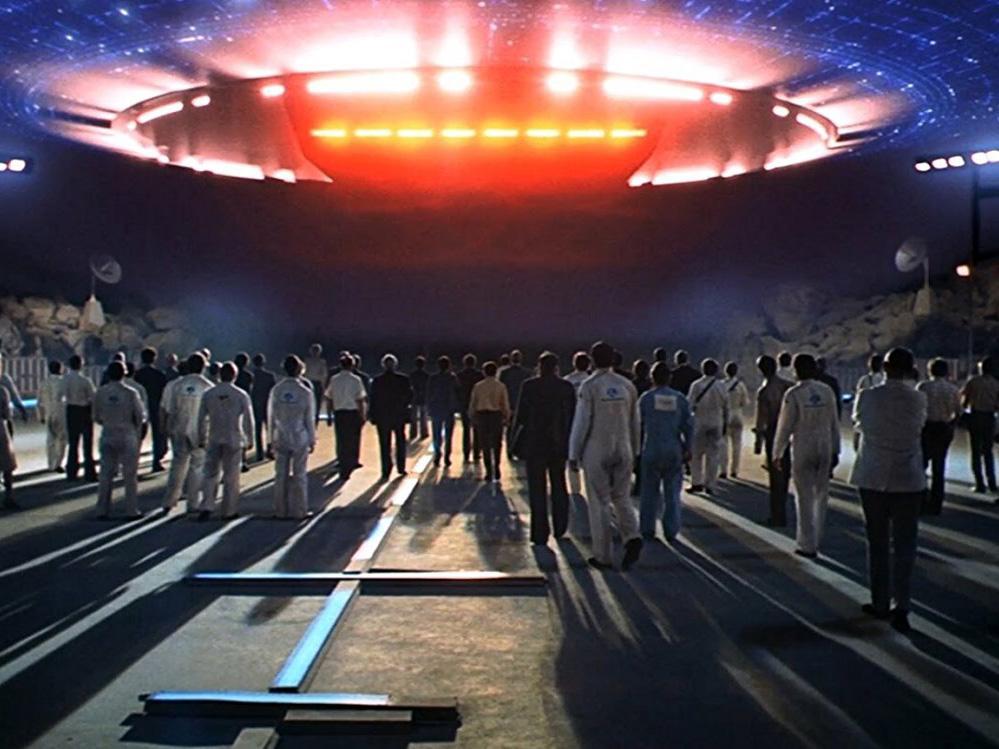
Your support helps us to tell the story
From reproductive rights to climate change to Big Tech, The Independent is on the ground when the story is developing. Whether it's investigating the financials of Elon Musk's pro-Trump PAC or producing our latest documentary, 'The A Word', which shines a light on the American women fighting for reproductive rights, we know how important it is to parse out the facts from the messaging.
At such a critical moment in US history, we need reporters on the ground. Your donation allows us to keep sending journalists to speak to both sides of the story.
The Independent is trusted by Americans across the entire political spectrum. And unlike many other quality news outlets, we choose not to lock Americans out of our reporting and analysis with paywalls. We believe quality journalism should be available to everyone, paid for by those who can afford it.
Your support makes all the difference.Steven Spielberg was six when his father made him watch the skies. Arnold Spielberg dragged his son out of bed without explanation in the middle of the night, and drove to a field where they joined New Jersey neighbours to stare at a meteor shower blazing through the dark.
That 1951 experience was grandly reimagined in Close Encounters of the Third Kind. After an early career defined by the shuddering menace of Duel and Jaws, Spielberg’s 1977 hit focused on crazed suburban dreamers, cultists and the simply curious in the forgotten Midwest: people like “me, my parents and the friends that I knew”, he explains, as aliens make majestic contact.
“This particular project had a noble agenda,” its star Richard Dreyfuss reflected on its 20th anniversary in 1997. “That we are not only not alone, but that we have relatively little to fear ... ‘Close Encounters’ was truly the first cultural, iconic moment that said, ‘Calm down, we’re okay. They can be our friends.’”
Now back in cinemas in a 4K digital print on its 40th anniversary, Close Encounters taught audiences to love the alien. It’s a lesson which has been regularly attacked or forgotten. But this strand of wistful, visionary science fiction in cinema has also endured, from 1997 film Contact to last year’s Arrival.
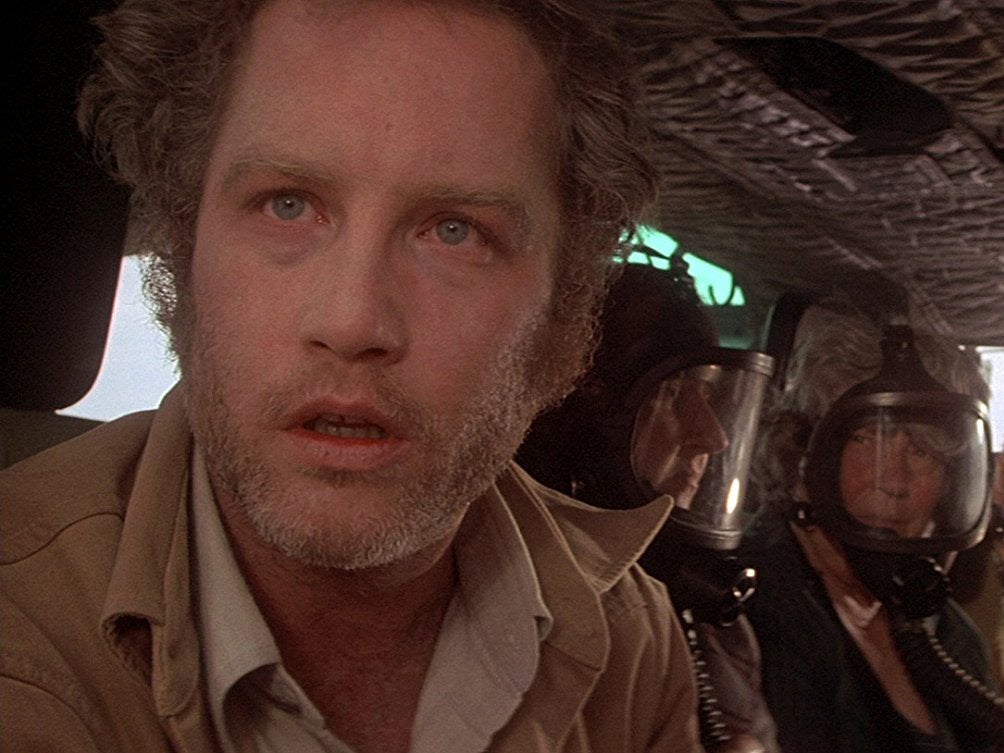
Though the conservative, apolitical Spielberg of 1977 was no hippie, Stephen King noted how Close Encounters tallied with its times. The director had “come to his majority while students were putting daisies in the muzzles of M-1s”, and the US military was failing in Vietnam, King wrote.
When Spielberg signed up for a science fiction film in 1973, it was to be called Project Blue Book. Like the venal mayor of Jaws, it would be steeped in the justified paranoia of the then-swirling Watergate conspiracy, as it explored government cover-ups of UFO sightings.
The military remains untrustworthy in Close Encounters. Army helicopters, so familiar from Vietnam news footage, storm over the night-time horizon, and are evaded by Dreyfuss and Melinda Dillon’s suburban visionaries as they trail UFOs, which hide in the clouds in pursuit of the wondrous truth.
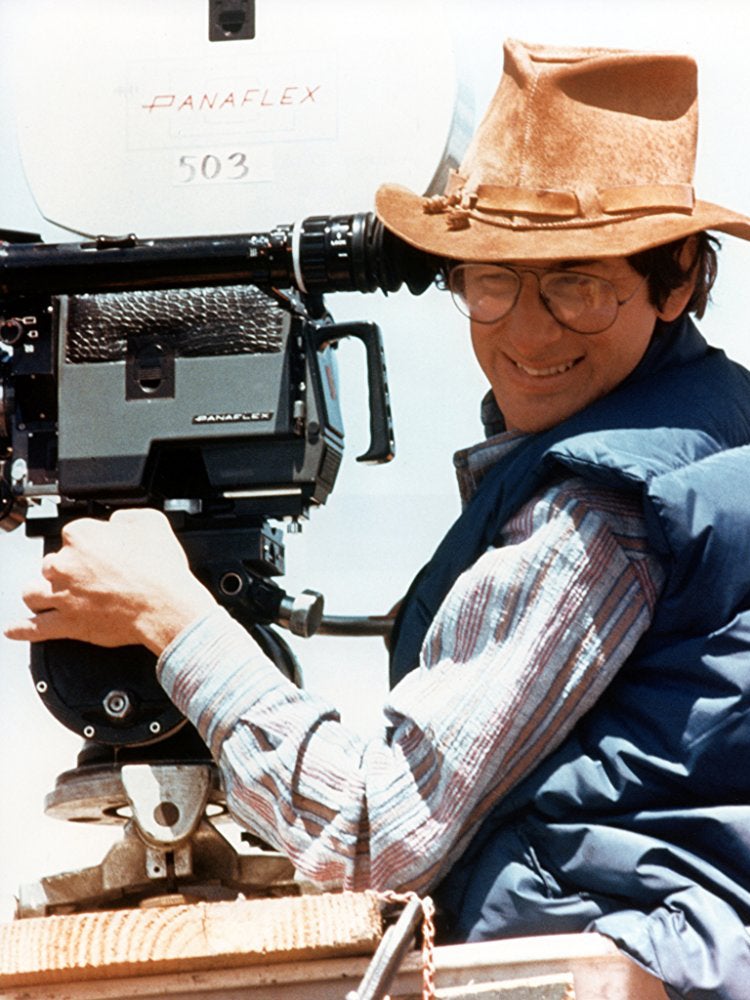
“We don’t identify with people in uniform,” Spielberg explained in 1997 (on the set, ironically, of Saving Private Ryan). First contact would not be made by “the face of the government”. Instead, he cast the great French director Francois Truffaut as the “kind and optimistic” scientist who takes charge of our first interstellar conversation.
“The film seems less concerned with science fiction than with recapturing the wonder of a child’s first experience of cinema,” Time Out’s critic David Pirie wrote at the time, calling Close Encounters “the first film in years to give its audience a tingle of shocked emotion that is not entirely based either on fear or suspense”.
This sense of wonder became a Spielberg cliché, and the prevailing intention of successful Eighties fantasy directors. Pirie’s review shows how new it seemed in 1977. The shark-like shadow and cinema-shaking Dolby rumble of the Star Destroyer in the opening scene of Star Wars, just months before, was replaced by benign awe at Close Encounters’ mountain-sized mothership.
Spielberg had written the screenplay with his own childhood wonder at Disney’s Pinocchio running through his head, and the smaller UFOs seen early in his film seem made of light, as they dazzle and dance like Peter Pan’s Tinkerbell.
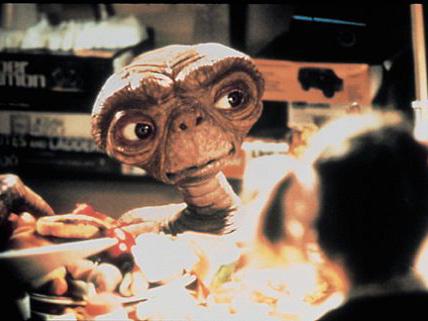
Spielberg had grown up enjoying a very different science fiction tradition, formed during its only previous period of cinema popularity in the 1950s. Then, the Cold War threats of Russia and the bomb were reflected in countless low-budget tales of radioactive monsters and alien invasion.
Don Siegel’s Invasion of the Body Snatchers (1955) was an enduringly sinister, politically potent nightmare of an American small town losing its identity to alien pods. More typically, Earth vs the Flying Saucers, The Thing and War of the Worlds saw a US Army fresh from World War Two success in pitched battle with the invaders.
Kubrick’s 2001: A Space Odyssey (1968) had introduced the cosmic awe which one of its special effects maestros, Douglas Trumbull, would develop in Close Encounters, and Nic Roeg’s The Man Who Fell To Earth (1976) explored Earth’s enervating effect on David Bowie’s harmless, listless alien.
However, enduring mainstream audience expectations, of both science fiction and Spielberg, were still pandered to in Close Encounters. The toys of Melinda Dillon’s three-year-old come eerily alive at night, before he runs happily into the fields to be snatched by a UFO. Even the mothership’s five-note musical communication ominously hints at John Williams’ previous theme for Jaws.
When we finally glimpse the aliens, though, they are mostly childlike. Dreyfuss’s character Roy Neary doesn’t fight these heavenly creatures; he joins them.
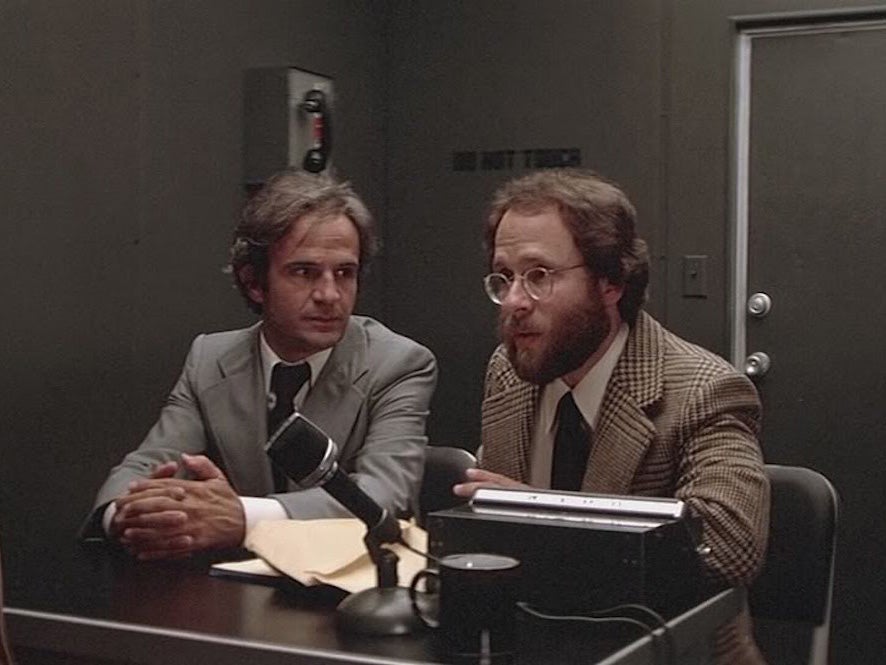
Alien had vicious fun with a Fifties-style monster in 1979. But the new philosophy was confirmed with ET The Extra-Terrestrial (1982). Intended as a small, personal film – partly inspired by an imaginary friend who comforted Spielberg during his parents’ divorce – its first contact was flooded with wonder, and was overwhelmingly emotional.
Expanding on the final alien he’d built for Close Encounters, Carlo Rambaldi designed ET as a stumpy, clumsy, eventually miraculous companion for 10-year-old Elliott. Armed government agents who capture and scientifically torture him are again objects of fear and suspicion. ET is essentially a child himself: naïvely wise; scared, and finally transfigured back into space.
ET dwarfed every previous film’s box office. In its wake, John Carpenter’s bleak remake of 1951’s The Thing, in which the alien is a bloodily body-morphing, visceral infection, and Ridley Scott’s dystopian Blade Runner (both released two weeks later), bombed.
Carpenter fared better with Jeff Bridges’ innocent, romantic visitor in Starman (1984), just as Ron Howard did with the elderly-rejuvenating aliens of Cocoon (1985). Simple interstellar shoot-‘em-ups inspired by Star Wars continued, and elsewhere at the Reagan-era box-office the not-exactly-pacifist likes of Rambo also triumphed. But Spielberg’s loveable aliens had conquered a generation’s imagination.
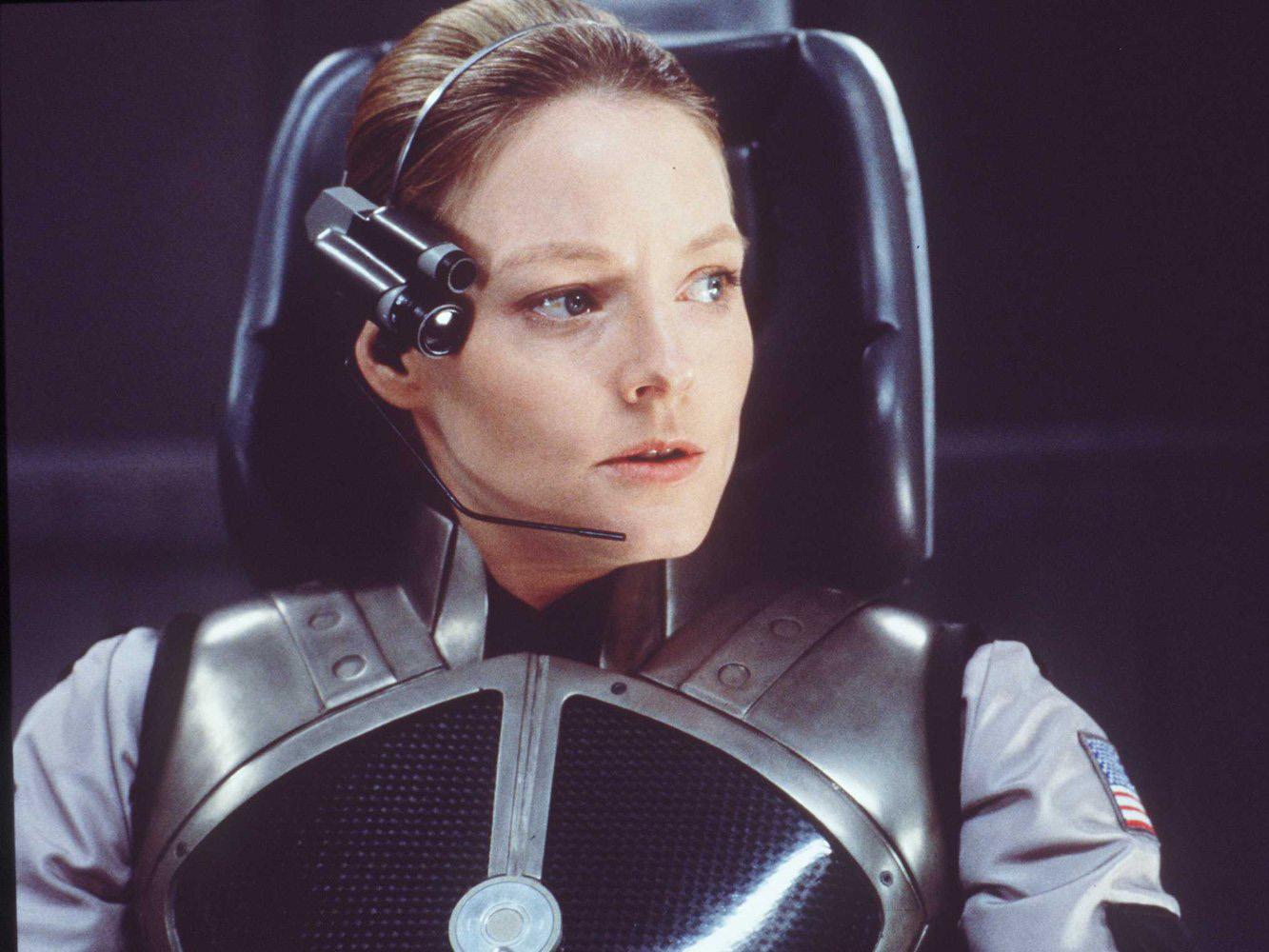
Roland Emmerich’s Independence Day (1997) was the first major hit to trash this new orthodoxy, as it took simple joy in aliens smashing up the White House and everything else, before Will Smith blows the hell out of them. Tim Burton’s satirical Mars Attacks! (1996) had shown the way, as the Martians gleefully obliterate pacifists who’ve watched too much Spielberg.
And yet, 1997 also saw a major continuation of Close Encounters’ ideas, when Spielberg protégé Robert Zemeckis directed Contact from a Carl Sagan script. Jodie Foster is the maverick scientist who picks up alien communications, and their apparent blueprint for a ship to visit them.
“Is it the default position of eggheads that all aliens are harmless?” James Woods’ NSA man sneers, as the military itch to act. This sober film finally lets Foster spend mere seconds in the aliens’ galaxy.
She returns as a prophet-messenger preaching of the “awe, and the humility and the hope” she experienced, as time and physics bent around her, preparing humanity for further contact.
Spielberg, meanwhile, answered Independence Day in 2005 by regressing to violent Fifties childhood pleasures, remaking George Pal’s War of the Worlds (1953) for a post-9/11 age. “Is it the terrorists?” Dakota Fanning asks Dad Tom Cruise, as great white clouds billow down New York streets.
Like they did when the Twin Towers fell, New Yorkers again become refugees fleeing Manhattan, as Martian tripods loom out of the mist. ET inverted the famous moment in Pal’s film when a malevolent alien hand reaches towards a human, and Spielberg revels in ratcheting up that exact moment’s threat.
“This isn’t one of my movies where suburbia is invaded by benign extra-terrestrials,” he explained, sounding almost relieved. He was so shaken by 9/11 that he even tampered with ET, digitally removing its hostile government agents’ guns.
This decade has seen both traditions develop, and new points in between. Neill Blomkamp’s District 9 (2009) used his South African experience to imagine aliens “not destroying New York ... they wouldn’t necessarily have the answers for human beings”, but instead proving weaker: hemmed into ghettos where their Nigerian neighbours sell them cat food at caviar prices. This is the first contact our colonists gave Native Americans and Africans.
Daniel Espinosa’s Life (2017) updates Alien to imagine dormant microscopic life on Mars which grows at a frightening rate, ferally chewing through a space station’s scientists. Ryan Reynolds’ character compares the creature to anthrax – though its mix of predatoriness and self-preservation is left ambiguous. “What’s frightening about discovering extraterrestrial life is that we don’t know if its intentions will be friendly or hostile,” co-writer Rhett Rees accurately noted, “and one or the other species, either it or we, will be exploiting or exploited.”
Dennis Villeneuve’s Arrival (2016), though, is a successor to Contact, and therefore to Close Encounters. It also looks back to the most famously pacifist sci-fi hit of the Fifties, The Day The Earth Stood Still (1951), in which the Christ-like Klaatu is shot by nervous soldiers when his flying saucer lands in Washington DC, and demands Earth mend its warlike ways or face destruction.
Villeneuve’s towering, truly alien heptapods similarly wish humanity to evolve. Military trigger-fingers again itch, but Villeneuve leaves the gunfire off-screen. Instead, Amy Adams’ linguist keeps talking. The non-linear time inhabited by the aliens lets her glimpse her whole life, and transform how she lives it.
Humanity learns “humility” through this contact, Villeneuve thinks. As with Christopher Nolan’s alien-free, time-warping Interstellar and Contact, space offers near-religious hope of dealing with death. The promise Roy Neary believed as he stepped into the mothership 40 years ago still holds today.
‘Close Encounters of the Third Kind: The Special Edition’ is out in cinemas now, and on Blu-ray on 9 October
Join our commenting forum
Join thought-provoking conversations, follow other Independent readers and see their replies
Comments